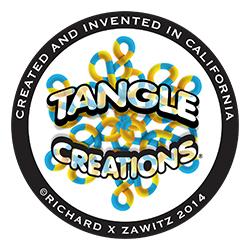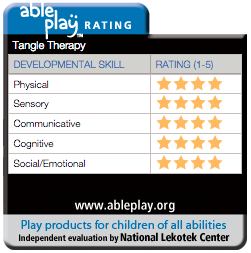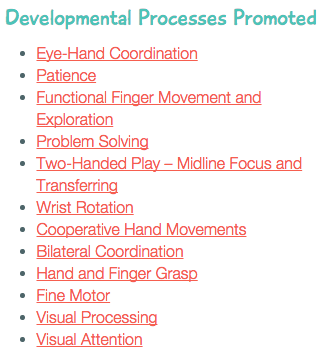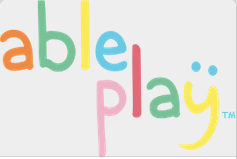Testing Tangle Therapy
Q: What exactly is Tangle Therapy good for? Has it ever been tested by an independent agency? Particularly how does it help children developmentally?
A: Yes, we now have an independent and thorough evaluation of Tangle Therapy conducted by the National Lekotek Center, the leading authority on toys and play for children with disabilities. Their mission is to provide research and access to the best toys for children of all abilities. Tangle Therapy is used by persons of all ages and abilities from young children to elders, but in the case of using Tangle Therapy with children it is important to identify its uses for developmental skill building.
The AblePlay evaluation process is designed to ensure an independent and detailed assessment of each toy or play product. This easy to understand rating system focuses on the developmental areas of physical, sensory, communicative, cognitive, and social/emotional abilities of a child. AblePlay evaluations provide research, ratings and reviews on each of these key areas of development.
“Tangle Therapy receives a 4 Star Review”
Sensory –
Skills
- Children can learn how to self regulate by using a Tangle Therapy.
- Manipulating the Tangle Therapy can help a child learn how to multitask.
- Manipulating the Tangle Therapy can increase manual dexterity needed for daily living skills, such as brushing teeth, eating with utensils, writing with a pencil.
Play Ideas
- To further develop hand and arm strength, have the child pull apart each piece. Then have him reconnect the pieces. This gives a child heavy work to increase the proprioceptive input his body receives.
- Disconnect one end of the Tangle Therapy and lay the “snake” out in front of a child. Have the child use both hands to roll the snake forward and backward (like rolling out play dough). The unique texture of the Tangle Therapy and the movement provide added sensory stimulation to play. This also helps children keep their hands open and use them simultaneously.
Adaptation Ideas
- Use the Tangle Therapy on a dark table surface to help heighten the color contrast.
- Set limits for a child fidgeting with the Tangle Therapy if it seems it is becoming more of a distraction and hindrance than a help to stay focused.
Physical –
Skills
- Fine motor skills and individual finger movements are encouraged as children play with the Tangle Therapy.
- Manipulating the Tangle Therapy and positioning it in different ways assists children use and develop bilateral coordination skills.
- Playing with the Tangle Therapy can help children move the muscles in their hands and arms, keeping them flexible.
Play Ideas
- To further develop hand and arm strength, have the child pull apart each segment. Then have him reconnect the segments.
- Disconnect one end of the Tangle Therapy and slowly move the “snake” from one side of the child to the other. Have him reach out to catch and the snake. This can also be done in front of the child to encourage reaching and arm extension. Alter the path and speed of the snake to increase or decrease the challenge.
- Twist the Tangle Therapy into a “ball” to play catch with a friend. The rubber coating assists with grasp and the unique shape prevents it from rolling out of reach.
Cognitive –
Skills
- Count the segments to incorporate early math skills.
- Manipulating the Tangle Therapy can increase manual dexterity needed for daily living skills, such as brushing teeth, eating with utensils, writing with a pencil.
- Problem solving skills come into play to pivot and twist the pieces to stack the Tangle Therapy.
Play Ideas
- Have a contest; once the child is familiar with the Tangle Therapy, use a timer to see how fast he can twist and stack the interconnecting segments. Have the child try to beat his score on subsequent trials.
- Disconnect one end of the Tangle Therapy and slowly move the “snake” from one side of the child to the other to encourage visual tracking, a skill that strengthens eye muscles needed for reading.
Adaptation Ideas
- Set limits for a child fidgeting with the Tangle Therapy if it seems it is becoming more of a distraction and hindrance than a help to stay focused.
See the full review on Ableplay‘s website.
More on the Ableplay rating system: “Parents often look at current toys and wonder, “Is this toy appropriate for my child?” Getting “inside the box,” and understanding the features and benefits as they align with the abilities of a particular child can be huge challenges. Even professionals serving children with special needs often lack the time and ability to search for the best products and toys. AblePlay does the research through comprehensive product evaluations relating this information to children’s abilities and skill development.”







